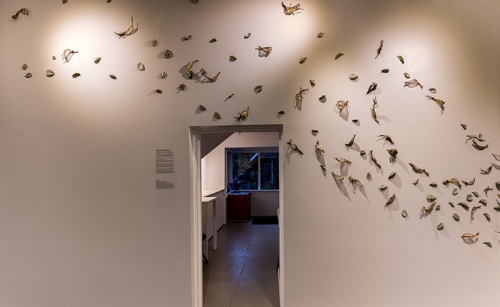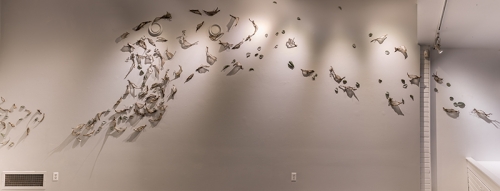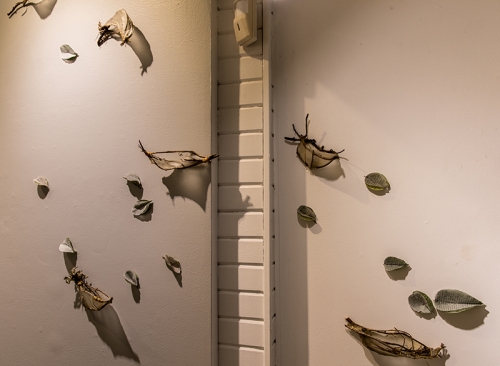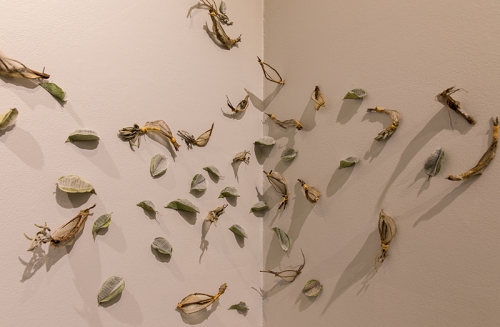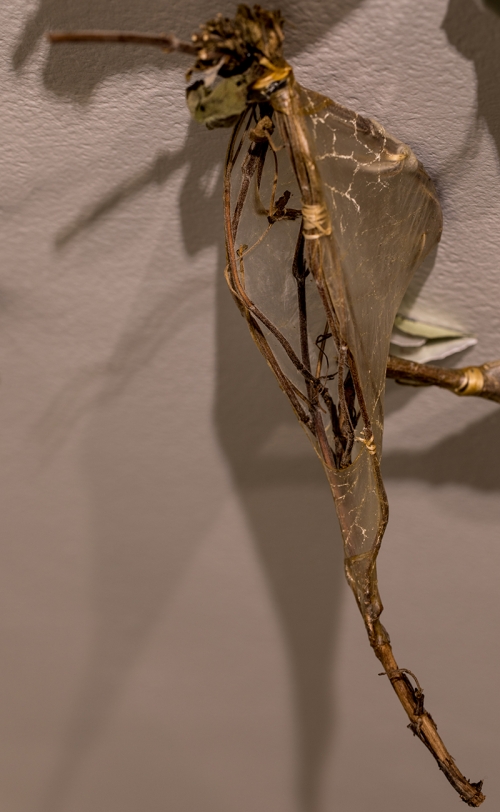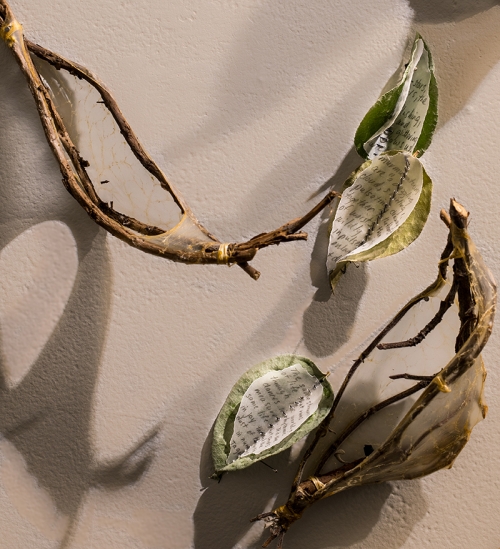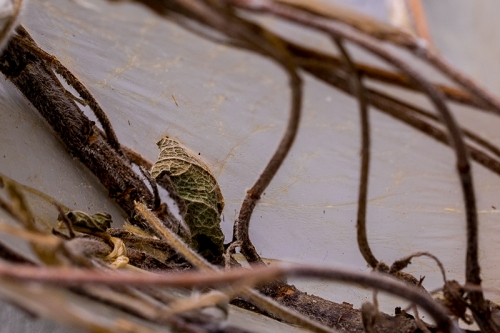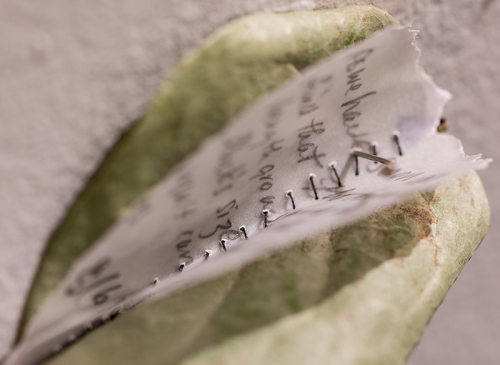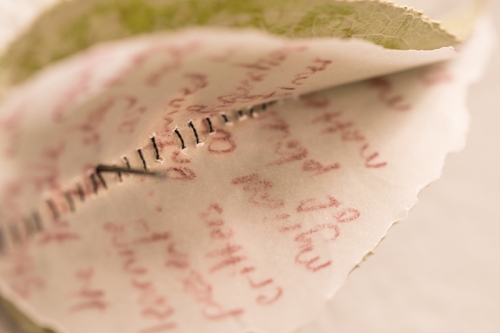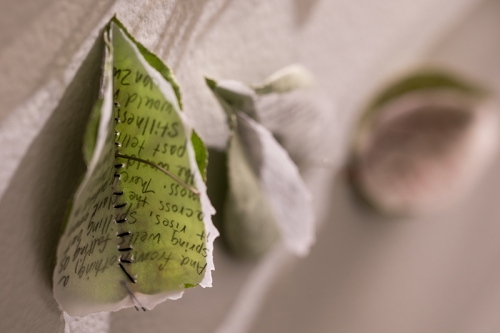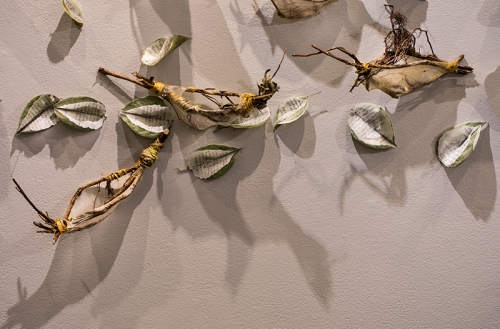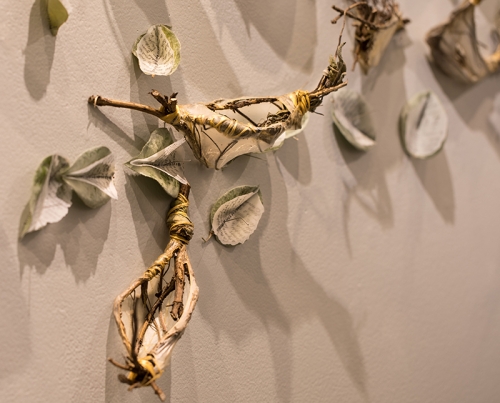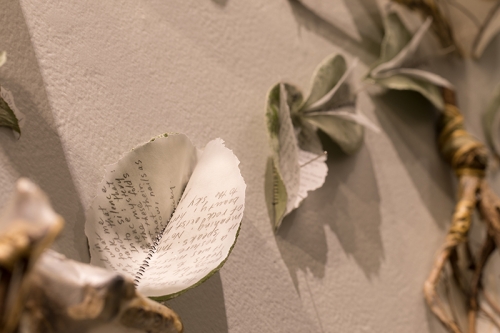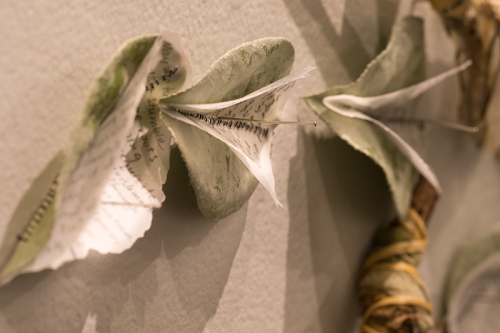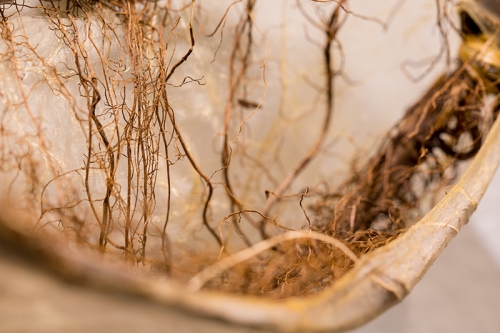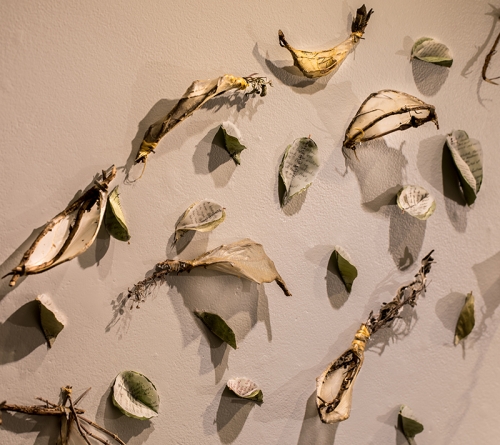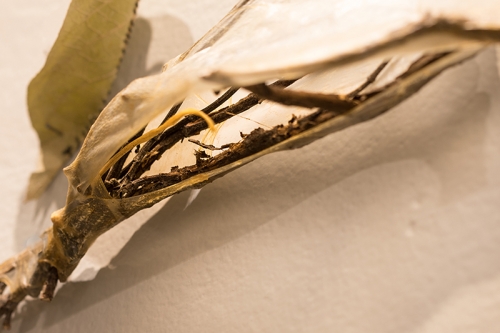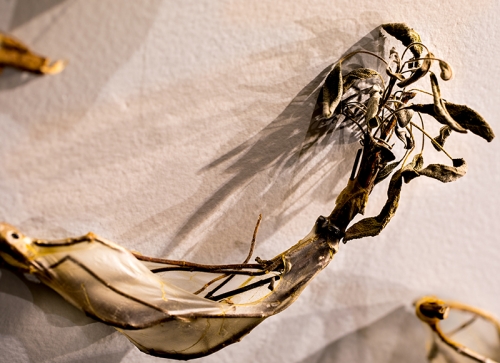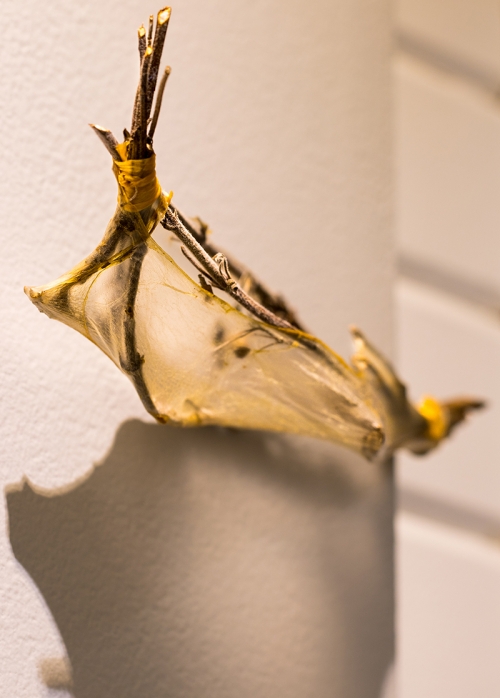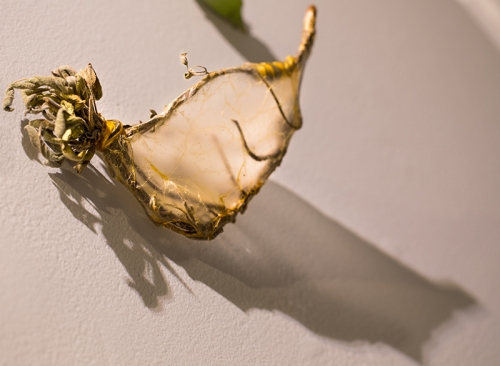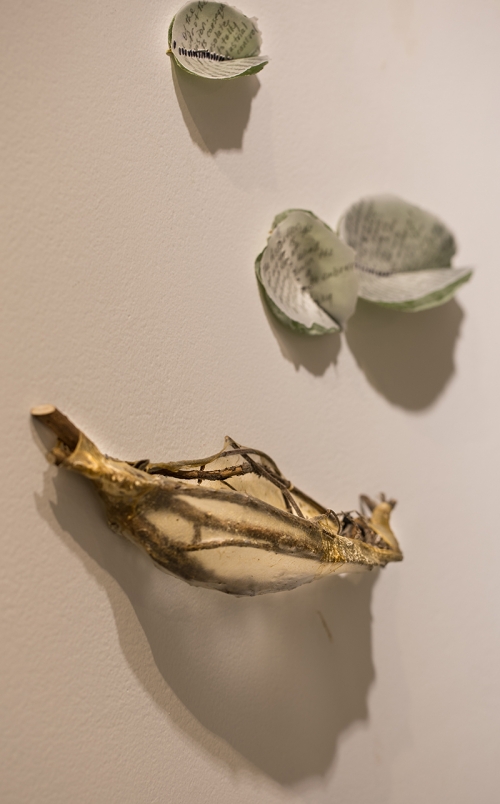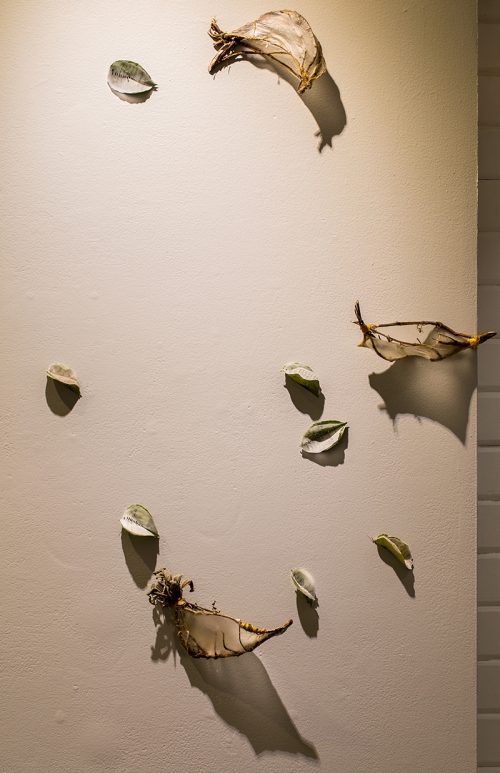Murmuration
Murmuration patterns are best known from the flocks of thousands of starlings who move synchronously, swiftly, and gracefully into ever changing complex patterns that amaze. They are described by Grainger Hunt from the peregrine fund as, “a dazzling cloud, swirling, pulsating, drawing together to the thinnest of waists, then wildly twisting in pulses of enlargement and diminution.” Often these aerial spectacles are instigated by a falcon near the edge of the flock. Physicists discovered starlings model a complex physical phenomenon known as scale-free correlation, that allow the group to respond as one. How is a mystery.
Based on murmuration, flocking or swarming patterns, this work invites viewers to consider what emergent order might be in the process of forming.
But this murmuration is made of tiny boats-like forms made from branches and leaves. Coracles are bent branch boats, the most ancient type of boat constructed all over the globe. These hand-held sculptural coracles are woven with sage branches and skinned with hog gut. The salal leaf boats are bound with notes of cryptic text. Both address the complexity and fragility of life on a planet in the midst of a changing system.
The notes quote a wide range of writers: Robert Bringhurst, Joanna Macy, Thomas Berry, Catherine Keller, Pope Francis, Tim Lilburn, Jan Zwicky, all who address inter-species commonalities–both physical and experiential–in light of climate change. These tiny objects intertwine human communication, lore and wisdom with the more-than-human life forms with whom we share a dependency on earth’s elements. The odd, entangled, boat-like forms imply a shared journey. By layering embodiment and environmental metaphors, and hinting at the sentience of material itself, we invite viewers to imagine what the earth would whisper to us if we had ears to hear. What if we were to cultivate a new intimacy with other forms of life on earth? What would this intimacy reveal to us?

